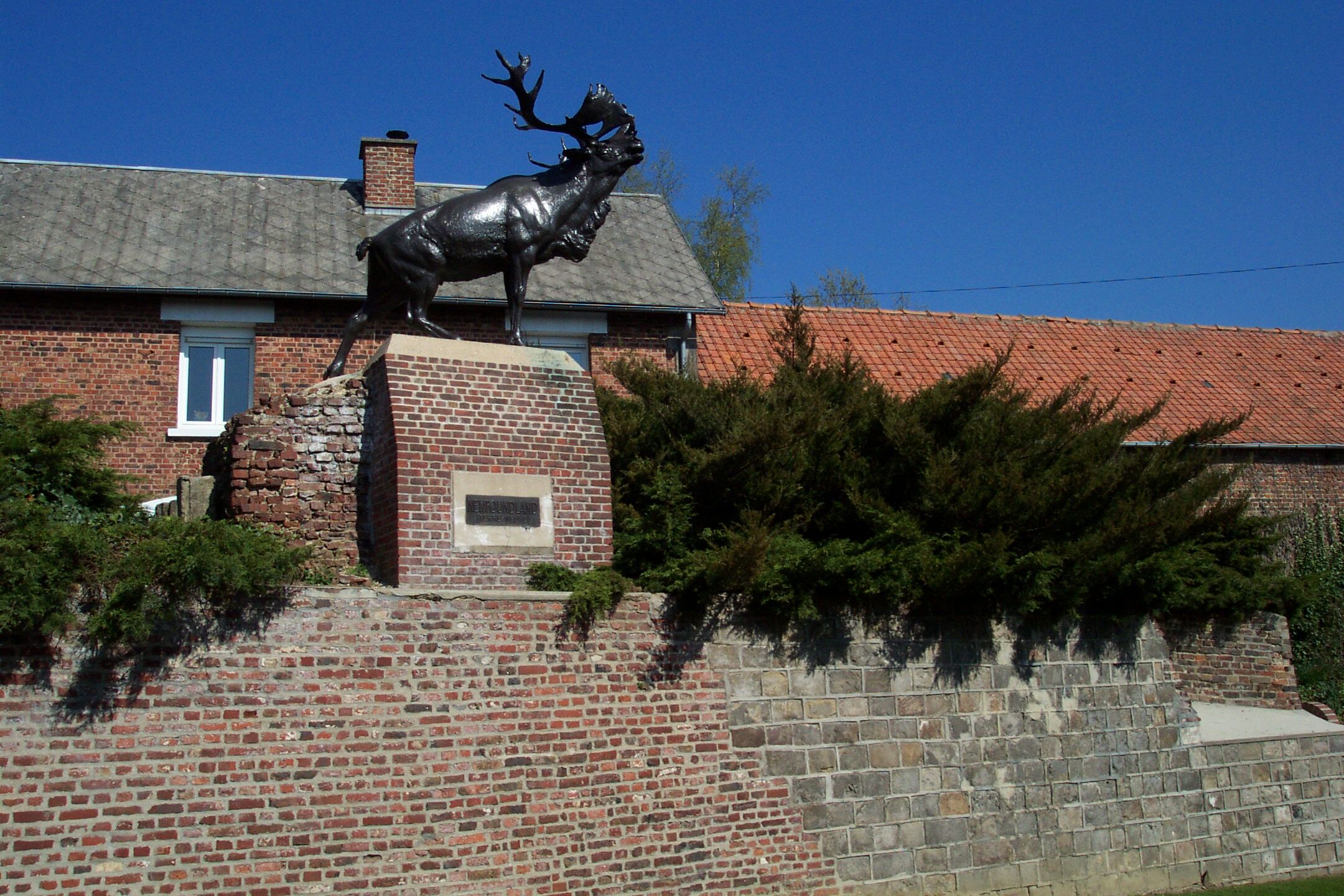Monchy-le-Preux Newfoundland Memorial
Nine kilometres east of Arras, the village of Monchy-le-Preux crowns a conical hill about a kilometre north of the main Arras-Cambrai road. At the eastern edge of the village, standing erect upon the ruins of a German strongpoint, the caribou of the Monchy-le-Preux Newfoundland Memorial gazes proudly toward Infantry Hill, where a handful of gallant Newfounlanders held off massive German counter-attacks on April 14, 1917.
Monchy-le-Preux
The encounter took place during Field Marshall Sir Douglas Haig's great spring offensive in which the British First and Third Armies attacked eastward from Arras on a 22-kilometre front. The 88th Brigade's operation was to be a two-battalion attack launched against Infantry Hill behind a creeping artillery barrage. The Newfoundland Regiment, commanded by Lieutenant-Colonel James Forbes-Robertson, was on the right and the 1st Essex Battalion on the left.
At 5:30 a.m. on April 14, the British barrage opened and the two battalions began their advance. At the end of 90 minutes the Essex had taken their part of the Infantry Hill objective. But as the Newfoundland companies advanced, they were raked by machine-gun fire. Suffering heavy casualties the Newfoundlanders pressed on to occupy the enemy's forward trenches in front of Infantry Hill.
As they reached the high ground of the Hill, a fresh German battalion met them. Second and third enemy battalions moved in and the Newfoundlanders were counter-attacked from three sides. Little knots of men held out until they were killed or captured.
At 10:00 a.m., Lieutenant-Colonel Forbes-Robertson received a report that not a single Newfoundlander remained unwounded east of Monchy and that some 200 to 300 Germans were advancing less than half a kilometre away. Quickly collecting all available men of his headquarters staff, he led them forward under fire to a trench on the village outskirts. They at once opened a series of rapid-fire bursts of rifle fire on the approaching Germans who, believing themselves opposed by a powerful force, speedily went to ground. For the next four hours these ten resolute men represented (to quote the British Official History) "all that stood between the Germans and Monchy, one of the most vital positions on the whole battlefield."
Every bullet fired by the defenders was made to count and by picking off scouts sent forward to appraise the situation, they kept the enemy in ignorance of their pitifully weak numbers. Relief came at mid-afternoon as British reinforcements arrived at Monchy. A final enemy attempt to launch an assault on Monchy was frustrated as heavy guns of the corps artillery bombarded German assembly areas in the Bois du Vert and the Bois du Sart.
Monchy had been saved, largely through gallantry and determination of ten men, but the Newfoundland Regiment's losses in the day's fighting had been severe. Total casualties for its part in the battle numbered 460 all ranks, including 153 taken prisoner.
Directions
The Monchy-le-Preux Newfoundland Memorial is about 25 kms west of Cambrai, 7 kms east of Arras, 45 kms south of Lille and 160 kms north of Paris. You can reach Arras by train or by bus and from there take a taxi to the Memorial. The trip to the Memorial is approximately €20 return. You can rent a bike at the train station; which costs approximately €5 per day, €11 per week and €17 per month.
Note: The cost of a taxi is based on return trips without a waiting period. If you want the taxi to wait for you while you visit the site you will be charged €7.90 per hour. Bus connections are difficult and there are not many of them in the rural areas of the department of Pas-de-Calais.
If you are travelling by car, please follow the directions below:
Note: Speed limits in France are 50 km/h in city limits and residential areas (generally unmarked), usually 90 km/h on secondary roads (but it may vary in areas) and 130 km/h on the motorway.
From Paris or Charles de Gaulle Airport take the A1 motorway, direction Lille. Continue on this road for approximately 160 kms. Take exit 15 and follow the D939 towards Cambrai. Once on the Arras/Cambrai road, drive for about 2 kms then turn left on the D33 to get to Monchy-le-Preux. To access the Memorial follow the traditional black and white signs with a maple leaf. It should take you approximately 1 1/2 to 2 hours to reach the Memorial.
From Arras take the D939 towards Cambrai. Once on the Arras/Cambrai road, drive for about 7 kms then turn left on the D33 to get to Monchy-le-Preux. To access the Memorial follow the traditional black and white signs with a maple leaf. It should take you approximately 15 minutes to reach the Memorial.
From Cambrai take the D939 towards Arras. Continue on this road for approximately 23 kms and turn right on the D33 to get to Monchy-le-Preux. To access the Memorial follow the traditional black and white signs with a maple leaf. It should take you approximately 30 minutes to reach the Memorial.
From Calais take the A26 and continue on this road for approximately 130 kms. Take the A1, direction Paris and continue on this road for approximately 5 kms. Take exit 15, direction Cambrai and drive on the D939 for approximately 2 kms; turn left on the D33 to get to Monchy-le-Preux. To access the Memorial follow the traditional black and white signs with a maple leaf. It should take you approximately 1 1/4 to 1 1/2 hours to reach the Memorial.
From Lille take the A1 motorway, direction Paris. Continue on this road for approximately 45 kms. Take exit 15, direction Cambrai and drive on the D939 for approximately 2 kms, turn left on the D33 to get to Monchy-le-Preux. To access the Memorial follow the traditional black and white signs with a maple leaf. It should take you approximately 40 minutes to reach the Memorial.
- Date modified:
